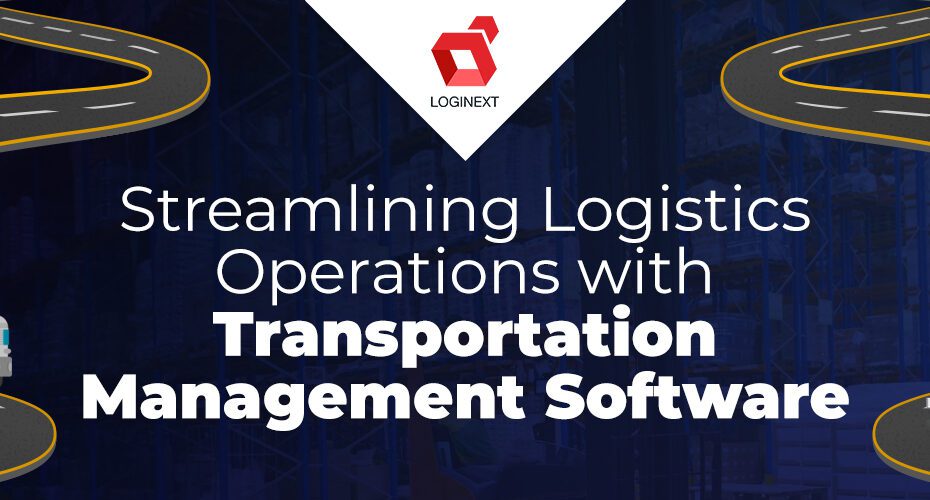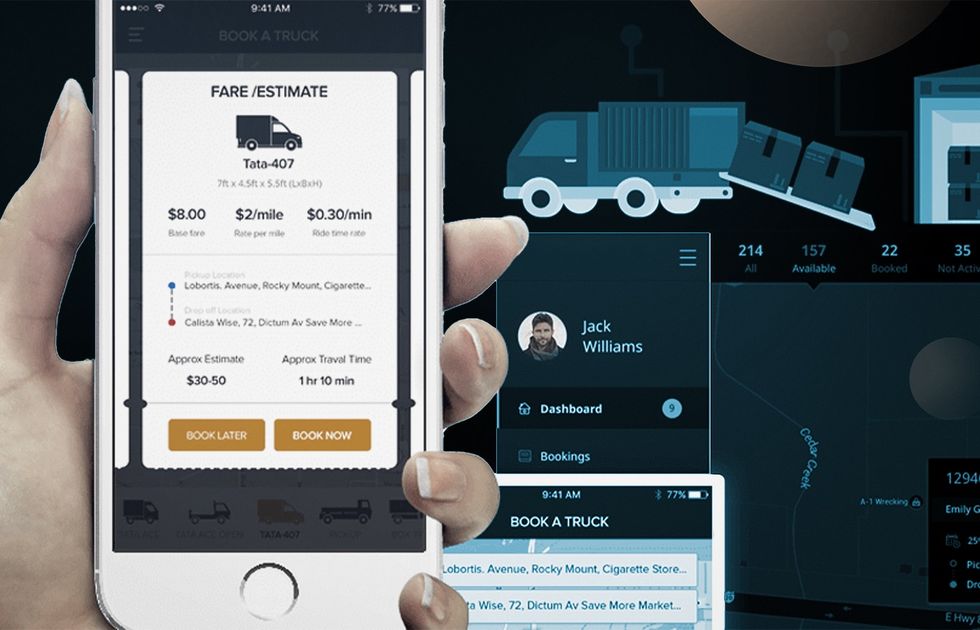LTL Dispatch Software optimizes freight management for less-than-truckload shipping. It streamlines operations and improves efficiency for dispatchers.
LTL Dispatch Software serves as a critical tool for businesses managing smaller loads that don’t require a full trailer. By integrating this software, dispatchers can effectively consolidate shipments, plan routes, and communicate with drivers to ensure timely deliveries. The software often includes features such as real-time tracking, reporting tools, and automated carrier selection for cost-effective shipping solutions.
The ability to quickly adapt to changing schedules and client needs makes LTL Dispatch Software invaluable in the logistics industry. It not only reduces human error but also enhances customer satisfaction by providing accurate delivery estimates. Investing in robust LTL Dispatch Software is essential for logistics companies looking to economize and capitalize on less-than-truckload shipping opportunities.
The Impact Of Ltl Dispatch Software
In the fast-paced world of logistics, LTL (Less-than-Truckload) dispatch software has revolutionized how freight companies operate. This technology not only simplifies the management of shipments but also optimizes the entire dispatch process. Leveraging sophisticated algorithms and real-time data, LTL dispatch software has made a monumental impact on the efficiency and reliability of freight operations. The following sections delve into the various advantages this software provides and the profound positive effects it has on load planning and tracking.
Advantages Of Using Ltl Dispatch Software
- Streamlined Operations: The software automates various routine tasks, reducing the need for manual intervention and minimizing human error.
- Cost Reduction: By optimizing routes and loads, the software helps companies save on fuel and labor costs, significantly boosting their bottom line.
- Improved Customer Satisfaction: Enhanced delivery reliability and accuracy lead to happier customers and repeat business.
Efficiency In Load Planning
Strategic load planning is essential for maximizing vehicle capacity and reducing transportation costs. LTL dispatch software facilitates the creation of efficient loading plans by analyzing factors like shipment size, destination, and delivery schedules. This ensures optimal usage of cargo space and resources, leading to higher operational productivity.
Real-time Tracking And Visibility
Real-time tracking is a cornerstone of modern logistics. LTL dispatch software offers unparalleled visibility into the shipping process, providing both dispatchers and customers with up-to-the-minute information on their freight. This includes location updates, estimated delivery times, and alert notifications for any potential delays. Such transparency builds trust and facilitates proactive measures to address any issues swiftly.

Credit: www.truckingoffice.com
Choosing The Best Ltl Dispatch Software
Finding the optimal Less Than Truckload (LTL) dispatch software can feel like searching for the right puzzle piece in a sea of logistics technology. This software serves as the nerve center for managing LTL shipments efficiently, combining various tasks into a seamless workflow. The right choice can dramatically impact the efficiency, cost, and reliability of LTL shipping operations. Let’s discuss the vital considerations to ensure you select the best LTL dispatch software.
Key Features To Consider
Selecting an LTL dispatch software requires a discerning look at the features that will make your operations smoother and more efficient. Crucial attributes include:
- Automated dispatching to streamline the allocation of shipments to available trucks and drivers.
- Real-time tracking and visibility for both dispatchers and customers to monitor the freight movement.
- A robust reporting system providing insights into operations and performance metrics.
- Billing and invoicing tools to speed up financial processes and enhance accuracy.
- Capabilities for rate comparison that assist in finding the most cost-effective shipping solutions.
Integration Capabilities With Existing Systems
The best LTL dispatch software should seamlessly integrate with your existing systems to create a cohesive environment. This includes being compatible with:
| System Type | Integration Benefit |
|---|---|
| Enterprise Resource Planning (ERP) | Centralizes business processes |
| Customer Relationship Management (CRM) | Streamlines customer interactions |
| Accounting Software | Automates financial transactions |
| Warehouse Management Systems (WMS) | Optimizes inventory control |
Efficient integration minimizes manual entry, reduces errors, and saves time.
Scalability And Customization Options
Your choice in LTL dispatch software must not only fit today’s needs but also tomorrow’s growth. Select a solution that scales along with your business. Key scalability considerations include:
- Ability to handle an increasing volume of shipments without performance loss.
- Flexibility to add new features, carriers, or integration points as needed.
- Customization options that adapt to your evolving business processes and client demands.
Software that offers extensive customization ensures that as your business evolves, your LTL dispatch solution evolves in tandem, promoting sustained growth.
Implementing Ltl Dispatch Software Successfully
Launching Less-than-Truckload (LTL) dispatch software within a logistics operation can be a game-changer for businesses seeking to enhance efficiency, minimize costs, and improve customer service. A successful implementation is critical to realize the full array of benefits such software offers. It calls for a structured approach that not only embraces technology but also focuses on the people who will use it daily. Let’s delve into the effective strategies that can smooth the transition and harness the powerful capabilities of LTL dispatch software.
Training And Onboarding Strategies
Effective training and onboarding are pivotal for the integration of any new software system. Here are the proven tactics:
- Customized Training Programs: Design training sessions tailored to the various roles within your company, from dispatchers to management.
- Use of Training Materials: Provide comprehensive guides and cheat sheets that help users navigate the new system with confidence.
- Hands-on Experience: Offer sandbox environments where users can interact with the software without the pressure of affecting live operations.
- Ongoing Support: Establish a helpdesk or a support team that users can reach out to for questions and troubleshooting.
- Feedback Loops: Encourage the staff to provide feedback during training, enabling fine-tuning of the program based on actual user experience.
- Varying Learning Formats: Use a mix of training formats, such as in-person workshops, webinars, and interactive e-learning modules.
Understanding that people learn differently and accommodating various learning techniques will maximize engagement and retention.
Importance Of User Feedback And Continuous Improvement
The path to maximizing the value from LTL dispatch software doesn’t end with its initial rollout. Ongoing success hinges on iterative improvements and the incorporation of user feedback.
- Gather User Feedback Proactively: Regularly solicit users for their insights on software efficacy and user-friendliness.
- Analyze and Act on Feedback: Scrutinize the feedback to identify common challenges or suggestions for improvements.
- Iterative Development: Collaborate with the software vendor to roll out updates that address the identified needs.
- Measure Impact: Continuously monitor key performance indicators to quantify the improvements achieved through software enhancements.
- Reinforce Training: As new features are added, provide updated training and resources to ensure users are proficient in using them.
Recognizing the importance of listening to the end-users who interact with the software daily, and adapting processes accordingly, is essential. This collaborative approach to continuous improvement leads to more refined software usage, ultimately driving value for the business.
Improving Logistics Operations With Ltl Dispatch Software
In the complex and fast-paced world of logistics, efficiency reigns supreme. Improving logistics operations is a continual goal for any business in the freight industry. Adopting LTL (Less Than Truckload) dispatch software can be a game-changer, offering innovative solutions that enhance every stage of the dispatch process. Let’s explore how this technology can streamline operations, making your logistic business smarter and more responsive.
Streamlining Communication With Carriers
One of the most significant impacts of LTL dispatch software is the transformation it brings to carrier communication. Information flows seamlessly through the system, ensuring that everyone stays on the same page. Some of the ways in which the software facilitates this include:
- Automated updates: Instantly send and receive status updates to and from carriers.
- Centralized information: Keep all communication logs in one place for easy access and reference.
- Real-time visibility: Track shipments in real-time, providing carriers with up-to-the minute information.
With such features, businesses can expect to see reduced delays and increased accuracy in their shipping operations—a huge leap toward operational excellence.
Enhancing Customer Service Through Accurate Delivery Information
Exceptional customer service is at the heart of any successful logistics business, and LTL dispatch software significantly contributes to this aspect. Using the software allows companies to provide customers with:
| Feature | Benefit |
|---|---|
| Precise tracking | Customers can monitor their shipment’s journey, reducing anxiety and building trust. |
| Estimated delivery times | Provide accurate estimates, helping customers plan accordingly. |
| Immediate notification | In case of delays or early arrivals, customers stay informed, improving overall satisfaction. |
Providing this level of detail promotes transparency and fosters stronger customer relations. The ability to deliver reliable and timely information not only enhances customer experience but also sets the foundation for enduring customer loyalty.
Overcoming Challenges In Adopting Ltl Dispatch Software
With the logistics industry constantly striving for efficiency and cost-effectiveness, Ltl (Less-than-Truckload) Dispatch Software has emerged as a game-changer. However, despite its benefits, integration and adoption can present challenges. Understanding and navigating these challenges is pivotal for a successful transition to this advanced dispatch solution. Let’s explore the common hurdles in adopting Ltl Dispatch Software and how to effectively overcome them.
Addressing Resistance To Change
Implementing a new system often meets with some level of opposition within an organization. It’s vital to recognize that encouraging user adoption is a strategic endeavor. Below are strategies to mitigate resistance and foster a smooth transition:
- Communicate the benefits: Articulate how the software improves workflow, reduces errors, and ultimately benefits the staff.
- Involve the team: Include users in the decision-making process to give them a sense of ownership and participation.
- Offer comprehensive training: Invest in both initial and ongoing training sessions to ensure comfort and proficiency with the new software.
- Provide support and resources: Establish a help desk or support team to assist employees as they navigate the new system.
Handling Potential Technical Issues And Downtime
The technical intricacies of Ltl Dispatch Software can sometimes lead to issues or downtime, which affects productivity. To minimize the impact, consider these approaches:
- Proactive maintenance: Schedule regular checkups and updates to prevent unexpected system failures.
- Develop a contingency plan: Have a clearly defined process in place for times when the software is unavailable.
- Train for troubleshooting: Ensure that there are knowledgeable personnel who can quickly address and resolve technical glitches.
- Choose reliable software: Opt for a dispatch software with a strong track record of uptime and customer support.
Frequently Asked Questions For Ltl Dispatch Software
What Is Transportation Dispatch Software?
Transportation dispatch software is a digital tool that streamlines scheduling and routing operations for logistics and delivery services. It optimizes dispatching tasks, tracks vehicles in real-time, and enhances communication between dispatchers and drivers.
Is Ltl Freight Profitable?
Yes, LTL (Less Than Truckload) freight can be profitable. It allows multiple shipments to share transportation costs, maximizing profit margins for carriers and reducing costs for shippers.
What Software Is Used For Trucking?
Trucking companies use software such as Transport Pro, TruckLogics, and Tailwind for fleet management, dispatch, and logistics planning. These tools streamline operations and improve efficiency in the transport sector.
What Is Ltl System?
LTL stands for Less Than Truckload, a shipping method for smaller freight not requiring a full trailer. This system allows multiple shippers to share space on the same truck, thus reducing costs and optimizing transport efficiency for small to medium-sized shipments.
Conclusion
Embracing LTL dispatch software propels logistics into a future of efficiency. Streamline your operations, elevate customer satisfaction, and stay ahead in a competitive market. Ready to transform your freight management? The right software is your launchpad to success. Take the leap and watch your business soar.
- Why Ease of Use is Crucial in Trucking Dispatch Software - September 22, 2024
- Better Communication With Dispatchers: How Trucking Dispatch Software Can Optimize Operations - September 7, 2024
- Maximizing Efficiency: The Importance of Accurate Location Tracking for Trucking Operations - August 23, 2024



